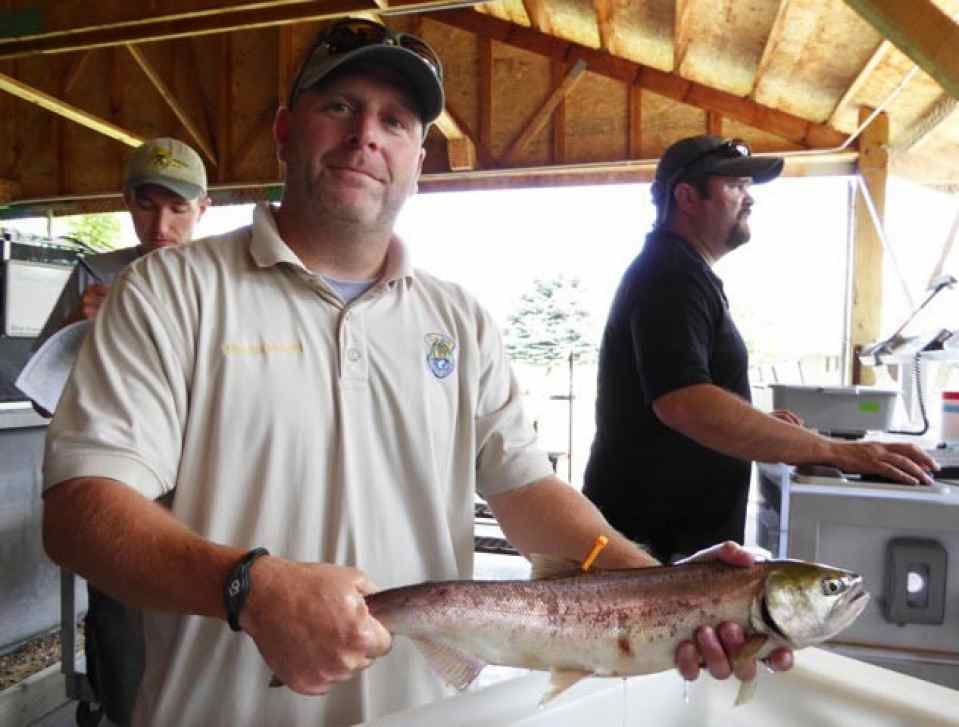forum
library
tutorial
contact

TMT Forgoes Juvenile Transport
from Lower Monumental Dam
by K.C. Mehaffey
NW Fishletter, August 1, 2022
|
the film forum library tutorial contact |

|
TMT Forgoes Juvenile Transport
by K.C. Mehaffey
|
The incidence of columnaris disease increases with water temperature
and is more common at Lower Monumental Dam
 The Columbia River Technical Management Team agreed July 27 to a system operational request from fish managers to forgo the collection and truck transportation of summer migrating salmonids from the juvenile bypass system at Lower Monumental Dam this summer.
The Columbia River Technical Management Team agreed July 27 to a system operational request from fish managers to forgo the collection and truck transportation of summer migrating salmonids from the juvenile bypass system at Lower Monumental Dam this summer.
Collection and transport of juveniles from Lower Granite and Little Goose dams to below Bonneville Dam from Aug. 1 to Sept. 30 will continue as planned in the TMT's fish operations plan.
TMT member Jonathan Ebel, an Idaho Department of Fish and Game staff biologist and chairman of the Fish Passage Advisory Committee, said subyearling fall Chinook are the primary migrants at this time of year.
He said a 2018 study led by NOAA Fisheries found no clear benefit for the fall Chinook juveniles transported by truck from Lower Monumental Dam. He said juvenile fall Chinook showed a highly variable response to being transported from the dam, doing better in some years and worse in others.
Because it's a "roll of the dice" whether salmonids will benefit, fish managers agreed it is unnecessary to transport from that project this year, he said.
Instead of transporting juvenile migrants, fish managers asked the U.S. Army Corps of Engineers to return fish in the juvenile bypass system to the river to migrate downstream.
Ebel noted a similar request was approved in 2020.
In addition, the incidence of columnaris disease increases with water temperature and is more common at Lower Monumental Dam, according to the request.
Ebel said he's unaware of studies evaluating the impact of transporting fish with the disease, but said, "We work under the assumption that if you put a symptomatic fish in a tank with nonsymptomatic fish, there's a higher probability it will spread than if you put it back in the river," he said.
Chris Peery, representing the Corps' Walla Walla District, noted transport can help juveniles escape the higher river temperatures, currently predicted due to a heat wave throughout the region. He said from 1,000 to 1,500 juveniles per day are currently going through the bypass system at Lower Monumental Dam.
Fish managers plan to revisit the issue and hope to determine whether there are specific conditions under which the transportation of summer migrants from Lower Monumental Dam should be curbed in order to give Corps operators more advance warning.
learn more on topics covered in the film
see the video
read the script
learn the songs
discussion forum
